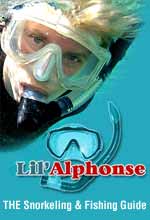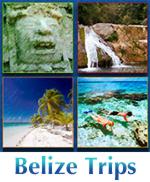A. No, it was The New York Times! In the 1970s, I was working as a set designer for an avant-garde theater company in Philadelphia. One Sunday, I read The Times and saw this photograph of a baby whale being killed. Something in me just snapped. “It’s a shame we’re slaughtering these animals when we know so little about them,” I said. I then got a Ph.D. I’ve been devoting myself to studying the abilities and the behaviors of whales and dolphins since.
Q. DOLPHINS SPEND MUCH OF THEIR LIVES UNDERWATER. HOW CAN YOU OBSERVE THEIR BEHAVIOR?
A. Well, I observe captive dolphins in aquariums. At the moment, my laboratory is an underwater glass booth in the dolphin pool at the National Aquarium in Baltimore. I climb into it with a video camera. The animals are used to me. My goal is to understand their behaviors well enough so that I can find ways to help them tell us about their cognitive capacities.
Dolphins, they have these really large, complex brains. The question is: what are they doing with them? These animals look like fish, but the behavior patterns are more like primates and elephants. They are vocal learners, like parrots and humans. What do the sounds they make mean?
Q. ONE OF YOUR MOST INTERESTING FINDINGS IS THAT DOLPHINS RECOGNIZE THEMSELVES IN MIRRORS. WHAT PROMPTED YOU TO TEST FOR THIS ABILITY?
A. I was called by the psychologist Gordon Gallup, who’d found that chimps could recognize themselves in mirrors. He thought we should see if other big-brained animals could do it, too. So I built this very big mirror and placed it in the pool at an aquarium in Northern California. Well, the dolphins got very excited. We saw them acting like the mirror was another dolphin. Then, they started slowing down and stopping in front of the mirror, like Harpo Marx and Lucille Ball in that famous routine. That changed to behavior that looked like they were looking at themselves. We then marked zinc oxide on a part of their body they couldn’t see. Well, they seemed to position their bodies so that they could see the marks in the mirror, though they didn’t do it often enough for us to feel certain they were responding to the marks themselves.
A decade later, I was at the New York Aquarium and noted how the dolphin pool there was made of reflective materials. One of the dolphins appeared to be using that to look at himself. I got mirrors and put them alongside the pool. This dolphin swam right up to the mirrors. Through testing, my colleague Lori Marino and I showed that two male dolphins, when marked on eight different parts of their body they couldn’t see without mirrors, would race to the mirrors. They’d actually position themselves so that they could see the marked parts. They even learned that if they wanted to see all of their bodies, they had to move back.
Q. What was the point of knowing this?
A. Because we used to think that humans were the only beings to look in a mirror and understand that the face there was theirs. And the fact that these dolphins were interested in looking at themselves shows that dolphins think. And it helps us understand that humans share higher thinking abilities with some other animals. If you put most animals in front of mirrors, they don’t even pay attention.
Q. WE KNOW THAT DOLPHINS ARE HIGHLY TRAINABLE. BUT HOW SMART ARE THEY, REALLY?
A. Let me tell you a story. One of the first dolphins I ever worked with was Circe. I’d bring her a fish when I wanted her to do certain things. If she didn’t do them, I did a “time-out” where I turned my back and walked away. Well, there was a certain type of fish that Circe loathed because it had a spiny tail. So I accommodated her by cutting the spines off of the tail. One day, I forgot to do that. Circe spit it out, swam to the other side of the pool and placed herself into a vertical position that mimicked my time-out. I wanted to test this. I gave her untrimmed fish on four different days. Whenever I gave her fish with spiny tails, she gave me a time-out. What that suggested was that she saw time out as a correction and used it back on me. Well, that’s how we learn to communicate.
Q. YOU WERE THE SCIENTIFIC ADVISER TO THE OSCAR-WINNING FILM “THE COVE.” HOW DID YOU GET INVOLVED WITH THAT?
A. I had learned about this fishing village in Japan, Taiji, where dolphins are herded into a small inlet and brutally slaughtered. These animals were being eviscerated and just left there to slowly die, flailing about in the sun. Well, these are the same type of dolphins I work with. I know how sensitive they are, how much pain they can feel, how a mere scratch bothers them.
Few scientists were speaking out about this. So I got biologists and aquarium professionals together and we started Act for Dolphins. We went to the Japanese Embassy in D. C. to bring them scientific information about the animals. Their attitude basically was, “anything we do in our waters is our business.” I also began working with Louie Psihoyos, the film director, and that was the beginning of making the “The Cove.” It’s been shown in Japan, but that hasn’t stopped the dolphin drive.
Q. HOW DO SOME OF YOUR FELLOW SCIENTISTS FEEL ABOUT YOUR ACTIVISM?
A. It used to be that you weren’t supposed to do both. But when I went to a marine-mammal conference a couple of years ago, I brought a petition against the dolphin roundup in Japan. Three hundred scientists instantly signed.
My feeling is if we can’t stop 34 fishermen from treating these animals so miserably, then what hope is there for fixing anything in this world? One reason I study dolphins is that I believe that knowing about them is one step in saving them. I hope I’m right.
Q. IN RECENT WEEKS, THERE HAS BEEN MUCH CONTROVERSY ABOUT THE WORK OF MARC HAUSER OF HARVARD. LIKE YOU, HE HAS STUDIED ANIMAL SELF-RECOGNITION. HAS THE NEWS COVERAGE CAST A SHADOW OVER THIS TYPE OF RESEARCH?
A. No. It has nothing to do with the field. Everyone wants to keep very good records of their data. We videotape everything we do. People who work with animals are very careful about our work because all you have is your credibility. This was an anomaly.

















